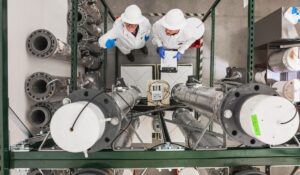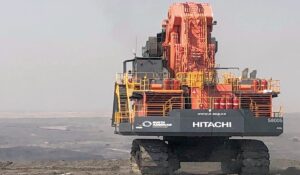Silicon Valley start-ups looking to make deeper inroads into a growing mine and quarry fleet autonomy market may need to work harder to convince Sand Hill Road investors to back them against firms making real progress in the space after the high-profile take-off and hard landing of SafeAI.
Founded by former CEO Bibhrajit Halder in 2017, SafeAI trumpeted a deal with mining contractor MACA in early 2022 to “create one of the largest autonomous heavy equipment fleets in Australia” at the Karlawinda gold mine in Western Australia’s Pilbara region. Halder said the two companies were “going all in on the next generation of autonomy”.
However, the momentous alliance was “cancelled” last year, according to a former SafeAI employee in WA, and a growing local team of engineers was made redundant.
Halder, who spent over 20 years at Apple, Caterpillar and Ford before starting SafeAI, said he raised more than US$75 million at the Santa Clara-based start-up.
But this week in a supposed reveal-all on SafeAI’s acquisition by another US autonomy firm, Pronto, its sale price was said to be “in the millions”. An employee headcount that went over 100 in 2023 had shrunk to a “small 12-person … engineering team” that would be absorbed by Pronto.
“In the autonomous haulage system space there’s really kind of two players — it’s SafeAI and us,” said seven-year-old Pronto’s co-founder Anthony Levandowski, who wanted to present the union as a “talent and technology play”.
That comment raised more than a few eyebrows this week in the world outside of San Francisco Bay Area zip codes.
A number of the world’s leading mining original equipment manufacturers are now materially growing autonomous underground and surface mine fleets each year, albeit overall industry take-up remains at single-digit levels. Non-OEMs such as China’s Eacon Mining Technology are also expanding rapidly. Eacon, which recently raised $55 million of equity funding, has formalised an alliance with the world’s largest mining contractor, Thiess. The Chinese company claims to have deployed nearly half of China’s circa-3000 autonomous mine and quarry trucks.
Mining equipment makers have been buying up smaller technology companies for the past five years, broadening their tech stacks and global accounts.
The field of players with mine and quarry fleet autonomy offerings has arguably never been stronger.
“We identified the biggest addressable market where we could commercialise it [vehicle autonomy] today, where customers had a pressing need … was the mining and quarrying industry. It’s a trillion-dollar part of the global economy,” Pronto chief financial officer Christian Kurasek said in New York in April this year.
“There are something like 75,000 haul trucks out there in the world that should be retrofitted to be autonomous.
“You cannot just show up and expect someone to sign off on a new technology [in mining] without proof.
“So we’ve been proving ourselves at larger and larger sites. We’re now dealing with 18 of the world’s top quarrying companies.
“We have deployments or are in conversations with a handful of the top 10 mining companies, which is huge.”
In February this year one of those quarrying companies publicly declared a commercial arrangement with Pronto. German building materials supplier Heidelberg Materials said it would deploy Pronto’s camera-based autonomous haulage system on more than 100 quarry trucks at various sites around the world after a pilot project at a site in Texas, USA.
No mining company has publicly announced a connection with Pronto, though the likes of Rio Tinto, BHP, Glencore, Codelco, Fortescue, Hancock Iron Ore, Boliden, Zijin Mining and many others have been fairly transparent about fleet automation technology partnerships and purchases.
Pronto engaged Australia’s Whittle Consulting two years ago to probe the relative economics of large fleets of small-payload mine (and quarry) vehicles versus smaller fleets of high-payload trucks. Mining being an industry that has moved progressively to larger, ultra-class trucks over the past 30 years.
Kurasek said in New York the study not only backed mining industry empirical data showing significant vehicle operating cost improvements from small-scale autonomy but, more holistically, mines actually designed for such autonomy could see net present value gains of 40-50%.
“We thought the numbers couldn’t be right but we now have studies with two different, big international mining companies that have replicated that analysis internally,” Kurasek said.
“Our focus now is on deploying to as many sites as possible as fast as possible, now we have that market validation.”
Kurasek said in April Pronto wasn’t then actively raising money to support its growth ambitions. That time might be closer now.
How much support Silicon Valley throws behind the local champion will be an interesting watch.









